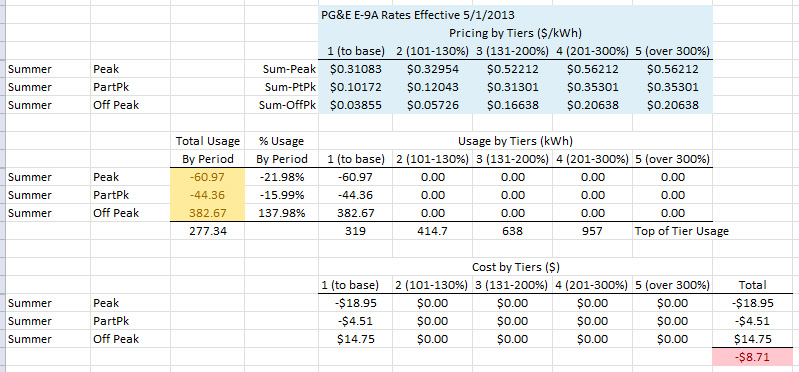FYI, we went with Solarcity to install our leased solar power system and we definitely paid less on our lease than we did in electricity before it was installed. However, we are relatively high power users, and our roof is ideally situated for solar (virtually no trees shading it). I should also note that last I heard Solarcity was VERY backed up with installs and it was taking 2-3 months before they could get the panels up.
The question is how charging the car will affect those rates, and we are not sure yet. We have switched to EV-A as of last week and if I understand correctly, given that we sell electricity back during the day when rates are highest, and charge the car at night when rates are low, the net effect on our bill should be very small. However, if I also understand correctly, that is averaged across the whole year before they figure your final bill. (People with solar pay PG&E once a year.) In other words, they add up all your usage during peak hours, all during partial peak, and all during off peak (for the whole year) and then multiply it by the rates for those times and figure your bill. From what I can see, it sure looks like we are net energy producers during peak hours, so that net positive will be balanced by our off peak usage at less than a third of that rate. Someone please correct me if I am wrong, but it seems like if we are careful about daytime usage, we could easily come out ahead...

